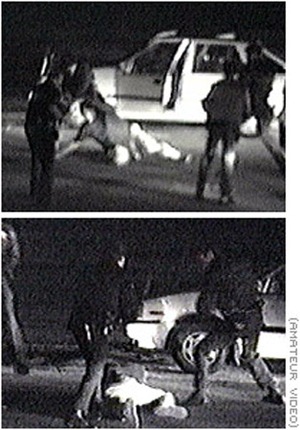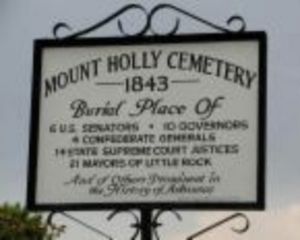On March 3, 1991, Rodney King, an African-American parolee for armed robbery, was driving under the influence. When he was stopped by the LAPD for speeding, he resisted arrest.
That night, when George Holliday heard police helicopters and sirens, he stepped onto the balcony of his San Fernando Valley apartment. He carried with him his Sony Handycam, a new technology that might enable an average person to become a video journalist. Holliday then recorded King being savagely beaten by four members of the Los Angeles Police Department.
Little did he know that his eight-minute video would result in a bloody citywide riot and would later foster a social revolution dubbed “citizen journalism”, long before today’s journalism phenomenon of online video sharing services like YouTube.
George Holliday’s Video
At first, Holliday didn’t intend to sell his shocking tape. In fact, he even considered erasing it because he doubted that anyone would be interested in a grainy eight minute video that showed Rodney King receiving more than 50 blows from police batons.
Next, he tried contacting the LAPD to inquire on the details of Rodney King’s condition, but got no answers. He then contacted local LA television station KTLA. According to their then news director Warren Cereghino, Holliday initially offered the video for free “because he just thought it needed to be seen.” The station gave him $500.
They edited the eight-minute video down to a violent 81-second excerpt. It aired multiple times on the station on March 4. KTLA then gave CNN rebroadcast access as part of an affiliate arrangement. As a result of CNN’s rebroadcasts, the video became available to other media outlets across the country, as well as network newscasts. The four officers in the video were later arrested.
The strong media buzz took George Holliday by surprise. He hired an attorney, claiming that his deal with KTLA didn’t include distribution rights to other media outlets. Holliday was also suing for retroactive usage payments from 900 media outlets, including television stations, networks, and syndication services. Attorneys for KTLA and the others rebutted that airing the Rodney King beating video was an example of “fair use” under the copyright laws.
On April 29, 1992, over a year after the night of the Rodney King beating, the four accused officers were acquitted by an all-white jury, triggering six days of citywide violence. The cost of the L.A. Riots: more than 50 deaths, over 4,000 injuries, and a billion dollars in property damages.
Who is George Holliday?
An Argentinean native, George Holliday was unaccustomed to displays of police brutality in public places. He had immigrated to the United States in 1980, when rampant police brutality in Argentina was notorious and occurred in secret.
At the time of the beating, he was employed at a San Fernando Valley plumbing company. After the release of the video and during the media frenzy after the Riots, he began receiving death threats by mail helping cause his marriage to fall apart. According to Holliday, strangers who recognized him would typically say, “You’re the guy who caused the Riots.” Holliday has said that he never wanted to create such as negative impact on the LAPD.
Years after the Riots, Holliday ran into Rodney King at a gas station. According to Holliday, King said, “Yeah, you saved my life.” And even the LAPD honored him with a plaque. At the ceremony, ex-Police Chief Darryl Gates gave Holliday his personal direct phone number “if you ever have any problems.”
In recent years, George Holliday had remained in the San Fernando Valley, and became a self-employed plumber, not advertising or listing his business contact number.
As for the tape, Holliday admitted that he had received a few thousand dollars over the years licensing the footage to filmmakers including Spike Lee. He now sells the eight-minute video in DVD format on his Argentina-based website. The website also sells a 30-minute video that tells the story behind the video, narration by Holliday himself.
SOURCES:
“The L.A. Riots 20 Years Later: Where are They Now?”, The Los Angeles Times, March 3, 2011
“How citizen journalism has changed since George Holliday’s Rodney King video”, Steve Myers, Poynter.org, March 3, 2011
“Red Alert: Amateur Videos”, Lou Prato, American Journalism Review, November, 1991
“Rodney King and the Rise of the Citizen Photojournalist”, Dan Gilmor, Mediactive.com, March 3, 2011




